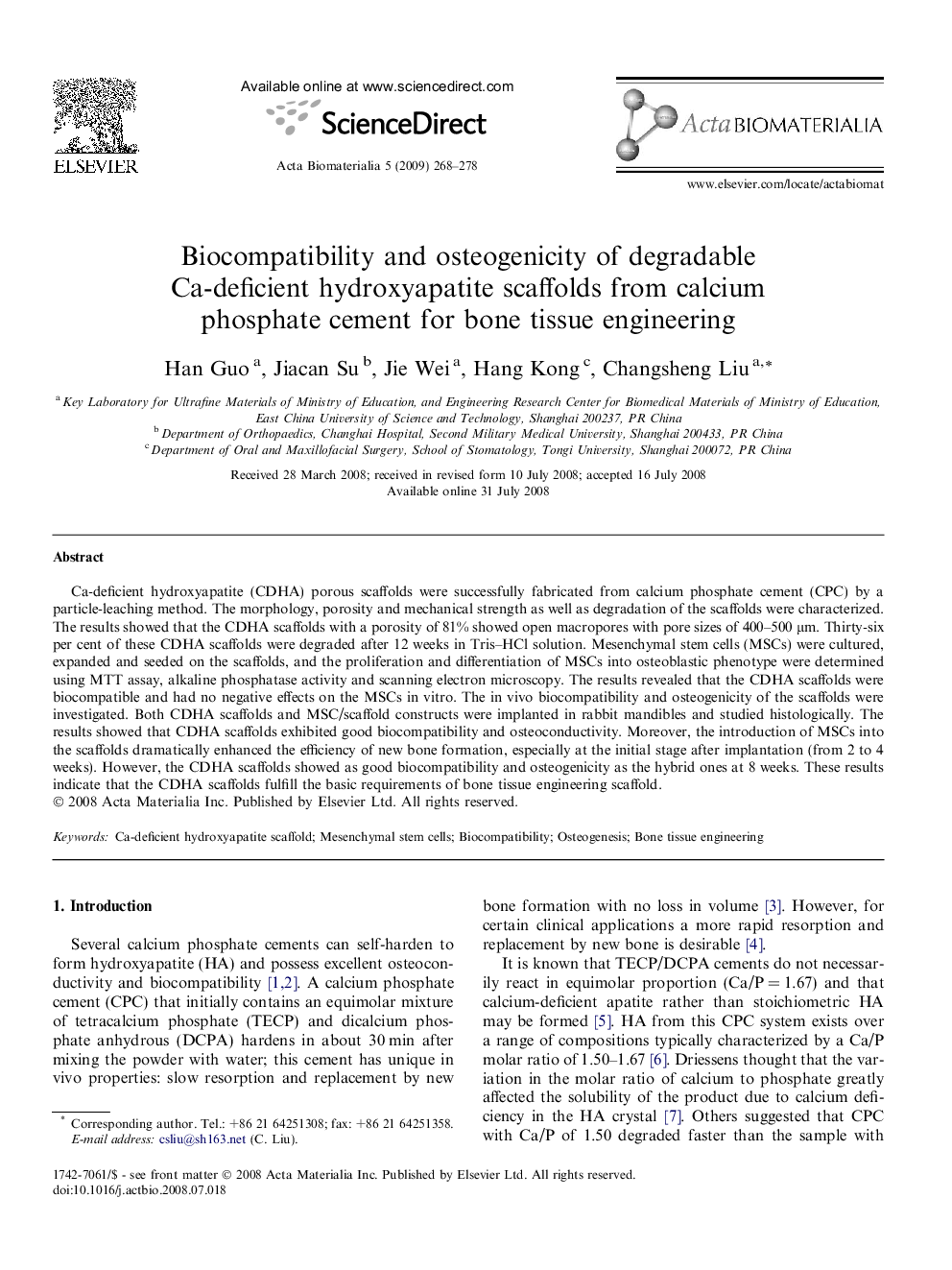| Article ID | Journal | Published Year | Pages | File Type |
|---|---|---|---|---|
| 2366 | Acta Biomaterialia | 2009 | 11 Pages |
Ca-deficient hydroxyapatite (CDHA) porous scaffolds were successfully fabricated from calcium phosphate cement (CPC) by a particle-leaching method. The morphology, porosity and mechanical strength as well as degradation of the scaffolds were characterized. The results showed that the CDHA scaffolds with a porosity of 81% showed open macropores with pore sizes of 400–500 μm. Thirty-six per cent of these CDHA scaffolds were degraded after 12 weeks in Tris–HCl solution. Mesenchymal stem cells (MSCs) were cultured, expanded and seeded on the scaffolds, and the proliferation and differentiation of MSCs into osteoblastic phenotype were determined using MTT assay, alkaline phosphatase activity and scanning electron microscopy. The results revealed that the CDHA scaffolds were biocompatible and had no negative effects on the MSCs in vitro. The in vivo biocompatibility and osteogenicity of the scaffolds were investigated. Both CDHA scaffolds and MSC/scaffold constructs were implanted in rabbit mandibles and studied histologically. The results showed that CDHA scaffolds exhibited good biocompatibility and osteoconductivity. Moreover, the introduction of MSCs into the scaffolds dramatically enhanced the efficiency of new bone formation, especially at the initial stage after implantation (from 2 to 4 weeks). However, the CDHA scaffolds showed as good biocompatibility and osteogenicity as the hybrid ones at 8 weeks. These results indicate that the CDHA scaffolds fulfill the basic requirements of bone tissue engineering scaffold.
